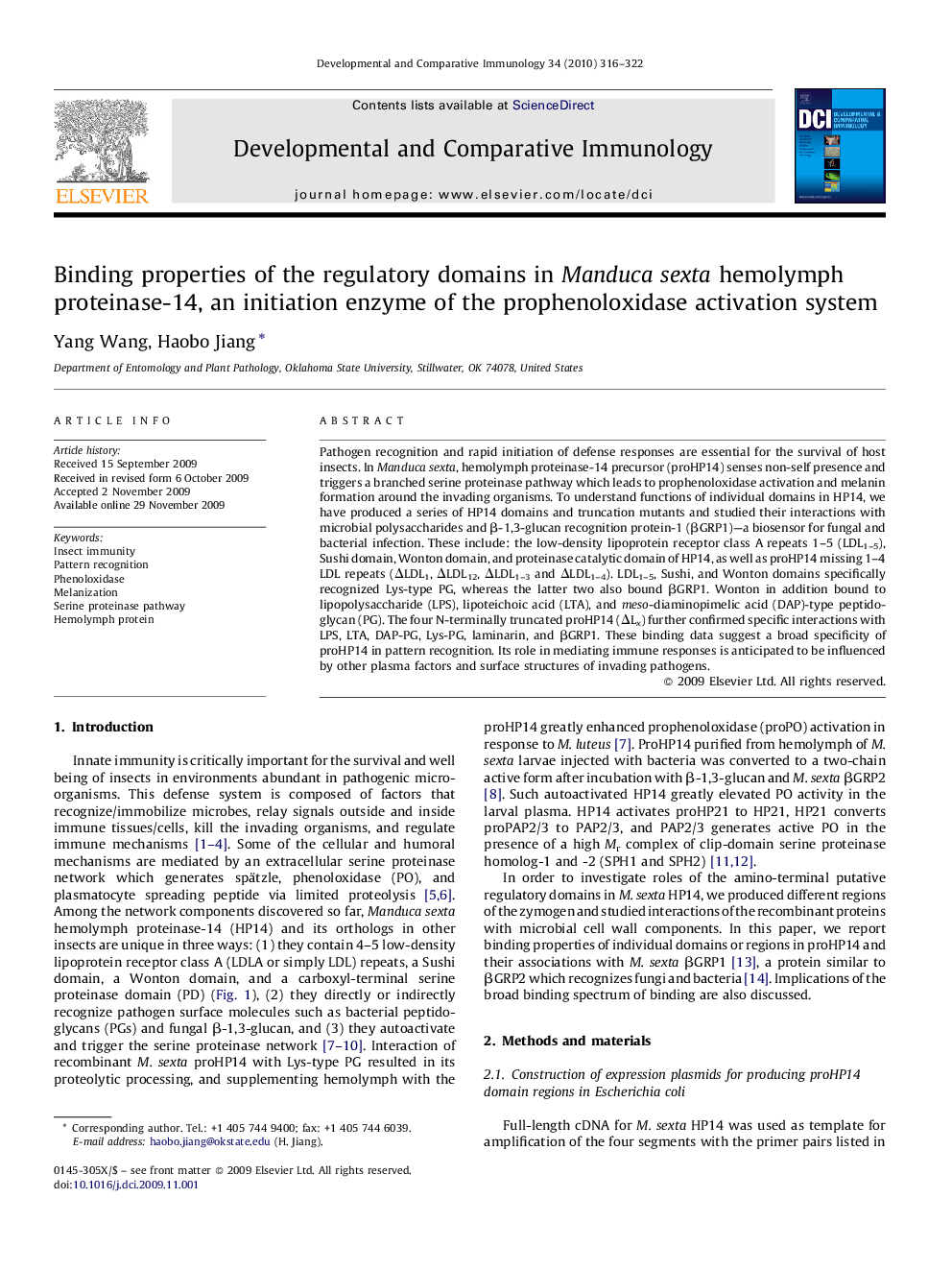| کد مقاله | کد نشریه | سال انتشار | مقاله انگلیسی | نسخه تمام متن |
|---|---|---|---|---|
| 2429918 | 1106529 | 2010 | 7 صفحه PDF | دانلود رایگان |

Pathogen recognition and rapid initiation of defense responses are essential for the survival of host insects. In Manduca sexta, hemolymph proteinase-14 precursor (proHP14) senses non-self presence and triggers a branched serine proteinase pathway which leads to prophenoloxidase activation and melanin formation around the invading organisms. To understand functions of individual domains in HP14, we have produced a series of HP14 domains and truncation mutants and studied their interactions with microbial polysaccharides and β-1,3-glucan recognition protein-1 (βGRP1)—a biosensor for fungal and bacterial infection. These include: the low-density lipoprotein receptor class A repeats 1–5 (LDL1–5), Sushi domain, Wonton domain, and proteinase catalytic domain of HP14, as well as proHP14 missing 1–4 LDL repeats (ΔLDL1, ΔLDL12, ΔLDL1–3 and ΔLDL1–4). LDL1–5, Sushi, and Wonton domains specifically recognized Lys-type PG, whereas the latter two also bound βGRP1. Wonton in addition bound to lipopolysaccharide (LPS), lipoteichoic acid (LTA), and meso-diaminopimelic acid (DAP)-type peptidoglycan (PG). The four N-terminally truncated proHP14 (ΔLx) further confirmed specific interactions with LPS, LTA, DAP-PG, Lys-PG, laminarin, and βGRP1. These binding data suggest a broad specificity of proHP14 in pattern recognition. Its role in mediating immune responses is anticipated to be influenced by other plasma factors and surface structures of invading pathogens.
Journal: Developmental & Comparative Immunology - Volume 34, Issue 3, March 2010, Pages 316–322